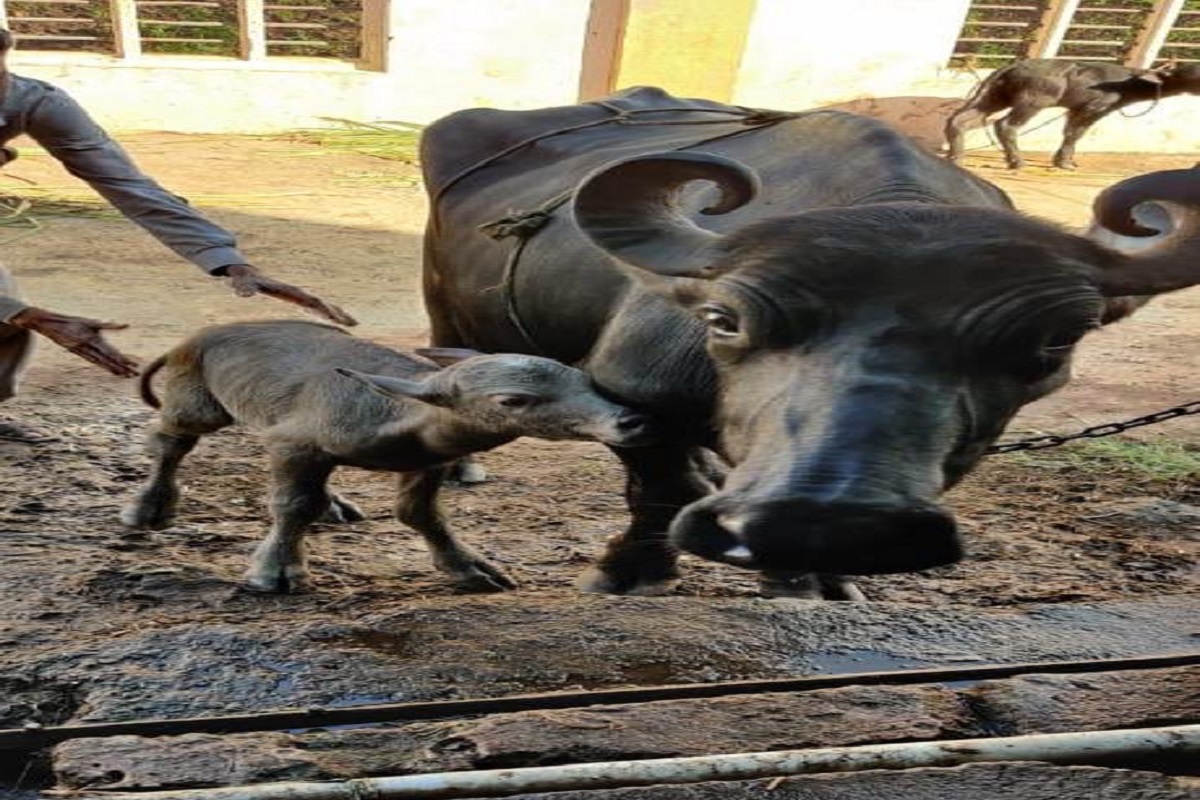For the first time In India, scientists successfully had a Banni Buffalo calf through IVF technology—a rare breed of Gujarat arid region, which can survive in the extreme weather and is known for its high milk production.
The Birth of the Banni Buffalo calf would open up doors for the mass production of rare Banni Buffalo, which can withstand extreme weather conditions, survive in the water-scarce atmosphere and produces 16 litres of good quality milk in a day.
Advertisement
Last year Prime Minister Narendra Modi had expressed his desire to promote the Banni Buffalo of Gujarat region among farmers to increase their income. During his visit to the Kutch region of Gujarat on December 15 last year, Prime Minister Narendra Modi had mentioned the success of Banni Buffalo farms and said it is giving a big return to the farmers.
Within a day of the Prime Minister’s public speech, 16 scientists picked up OPU (Ovum Pick-Up) and started the process of the In-Vitro Fertilization (IVF) of Banni Buffaloes. “The scientists aspirated 3 Banni Buffaloes of Sushila agro farms of Vinay. L. Wala of Dhanej in Somnath district of Gujarat. They subjected 29 oocytes (egg cells) to an intervaginal culture device (IVC) from these three Banni buffaloes. Total 20 oocytes from one of them were subjected to IVC, which resulted in 3 IVF pregnancies, and finally, one Banni calf was born,” said a senior officer of the Ministry of Animal Husbandry.
“Overall, 18 embryos were developed from 29 oocytes (62 % BL rate). The ET of 15 embryos resulted in 6 Banni pregnancies (40 % Pregnancy rate). Of these 6 pregnancies, the very first IVF Banni Calf is born today. This is the first Banni Buffalo IVF calf in the country,” he said.
Both the government and the scientist fraternity see great potential in the field of IVF of buffaloes and are striving hard to improve cattle wealth in the country.
Bunni buffalo is also known as ‘Kutchi’ or ‘Kundi’ primarily found in Kutch. It is usually a rare breed preserved by the local community ‘Maldharis’. Banni has a different genetic makeup as compared to common breeds, which allows for longer lactation periods, higher milk production potential.
Unlike other varieties of buffalo, It can sustain harsh climatic conditions by consuming the naturally available grasses and can survive infrequent drought conditions, low humidity and high temperature.











